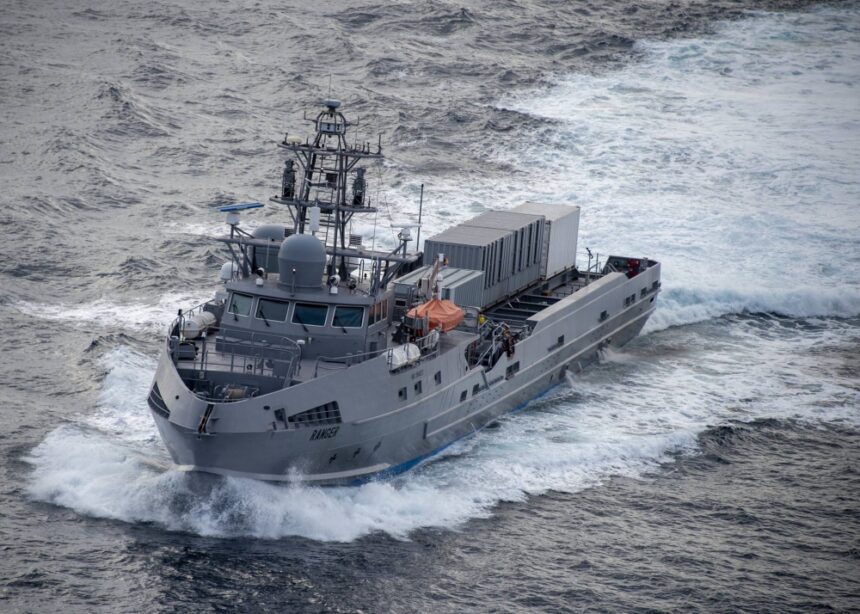In a rare and pointed display of military signaling, China’s navy has publicly identified U.S. and Japanese warships as enemy targets during a naval open day, drawing attention amid rising tensions in the Taiwan Strait.
During the public tour of the Nanjing, a Type 052D guided-missile destroyer in Taizhou, visitors saw an onboard display naming the U.S. Arleigh Burke-class and Japan’s Atago-class destroyers as “enemy surface vessels.” The information was part of an exhibit promoting the YJ-18A, a long-range, supersonic anti-ship cruise missile.
“The YJ-18A can strike large and medium-sized enemy surface vessels such as the U.S. Arleigh Burke-class and Japan’s Atago-class destroyers,” the display read. The exhibit touted the missile’s accuracy, supersonic terminal speed, and ability to boost China’s maritime strike capabilities.
The timing of the display appeared deliberate, coinciding with the passage of the USS William P. Lawrence, an Arleigh Burke-class destroyer, through the Taiwan Strait. The move, labeled “routine” by U.S. Indo-Pacific Command, sparked a strong response from Chinese military officials, who accused the United States of provocation.
Senior Colonel Shi Yi, spokesperson for the PLA’s Eastern Theatre Command, said Chinese forces took “lawful countermeasures” in response to the transit, and the military released footage of the U.S. warship. At a separate briefing, Defense Ministry spokesperson Zhang Xiaogang warned that U.S. support for Taiwan would “backfire” and urged Washington to stop escalating tensions.
Military observers say the decision to publicly name adversary vessels during peacetime marks a shift in China’s defense communications. Analysts argue it reflects growing confidence within the People’s Liberation Army Navy (PLAN) and signals its readiness to deter what it sees as foreign encroachment.
Wang Yanan, editor-in-chief of Aerospace Knowledge, said the public mention of the U.S. and Japanese destroyers shows “clear internal consensus” within the PLA. He noted that the YJ-18A’s reported range of more than 600 kilometers and terminal speed exceeding Mach 3 gives it a significant advantage over older systems like the U.S. Harpoon missile, which remains subsonic and has a shorter reach.
“In a one-on-one encounter, a Type 052D can engage an Arleigh Burke from outside its strike range,” Wang said, noting the PLA’s confidence in its close-in weapon systems to intercept return fire.
Japan’s Atago-class destroyers, with similar features to later Arleigh Burke variants, are seen as offering limited additional defense against the YJ-18A, Wang added.
The development comes as Japan invests in next-generation Aegis destroyers with advanced radar systems, expected to enter service by 2028. Meanwhile, China has continued to highlight its modernization efforts, including unveiling its 10,000-ton Type 055 destroyer.
China’s identification of named enemy vessels marks a new phase in regional military posturing. While it is not unusual for militaries to plan against potential adversaries, publicly identifying them in this manner during peacetime is seen by analysts as a deliberate form of strategic messaging.
The move reflects the broader trend of hardening rhetoric and military preparedness in the Indo-Pacific as U.S.-China tensions persist over Taiwan and regional maritime control.
Read more here.







